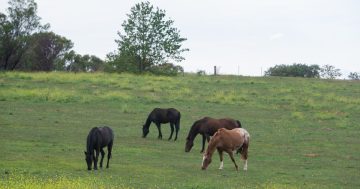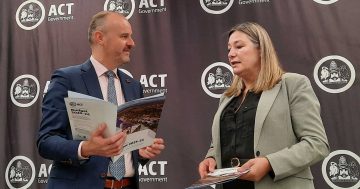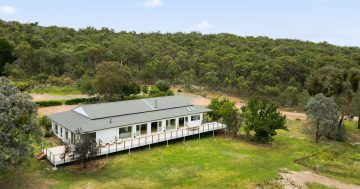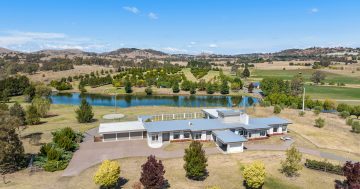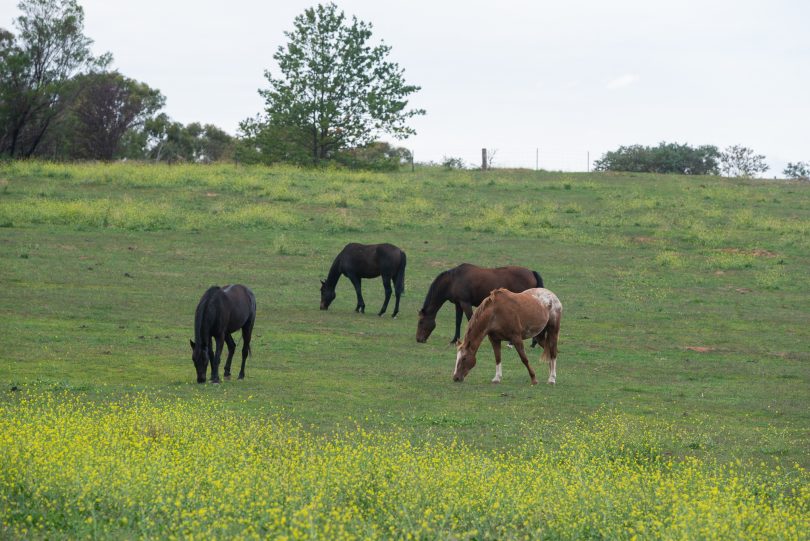
The Curtin horse paddocks. Land such as this in the city could be more than just future real estate projects. Photo: File.
The coronavirus crisis has turned many presumptions on their head. One of them is that high urban density is a good thing and that suburban sprawl is to be avoided.
As cities such as New York suffer terribly as the virus rips through its tightly clustered communities of apartments, urban planners who have always championed the use of open space as public health measures are again reiterating the importance of giving communities room to breathe and not be so susceptible to contagion.
Some commentators are even suggesting that the spread of Australia’s cities may be contributing to the apparent success of lockdown measures to contain the virus.
Certainly, the ACT, an island within NSW that remains a reasonably decentralised society, has found it easier than most to stop the spread of COVID-19.
Perhaps it can be a wake-up call about the march of the high-rises in Canberra and the government’s infill policy, which is turning over town centres to concentrated living and converting suburban green spaces into medium-density housing.
It’s a balancing act and all the arguments have been well traversed but the ACT continues to head down a path that ignores opportunities to use its open space more productively than simply as potential development sites.
The summer bushfires, and now the coronavirus crisis, also highlights how fragile our supply chains are, especially for fresh food. When the South Coast burned and communities were isolated, the local growers came into their own when supermarkets ran empty as cut highways left their trucks stranded.
Canberra is perfectly placed to earth a different vision of how a city imagines itself.
How many Australian cities and towns have seen productive agricultural land go under housing, losing market gardens, orchards and even dairies that fed its people, all the while putting an ever greater distance, psychologically as well as physically, between consumers and the source of their food.
Canberra, for strategic and security reasons, was meant to have a fair degree of self-sufficiency, and there is no reason why parts of the city can’t again be part of that story.
Take the Curtin horse paddocks as an example. A significant portion of that land is now destined to be an elite diplomatic estate after the recent land swap. Other parts near the light rail route may end up being high-density housing. And inevitably as precedents are set, other areas may fall.
Why can’t we think about a use for this kind of land that contributes to the city’s economy and its public health?
Why not market gardens or orchards that can supply fresh produce to not just households but the burgeoning cafe, restaurant and winery culture that is contributing to the Canberra region’s growing attractiveness as a tourism destination?
Low-kilometre, high-nutrient food produced on micro-farm belts break up the built environment and provide a living vibrancy, an extension to the already established community gardens concept.
Add renewable energy and regenerative agriculture and permaculture practices, integrating the horse paddocks so all that manure doesn’t go to waste, and you get the picture.
The city can be a diverse organism that can be not just a place to live but a livable place to be.
It doesn’t have to necessarily be a just a complex of buildings, roads, parks and trees but even more dynamic.
There are challenges, no doubt. Land may need to be remediated and rehabilitated. Water, especially in an environment like the ACT, impacted as it is by climate change is an issue but not beyond technology-based solutions.
But I think the biggest hurdle will be redefining the model we have accepted for the city and giving life to our imaginations about what it could be, beyond being a real estate project.
If anything, the coronavirus crisis has given us pause for thought, to reassess what is important and life-affirming, and what the ”economy” should really be about.











